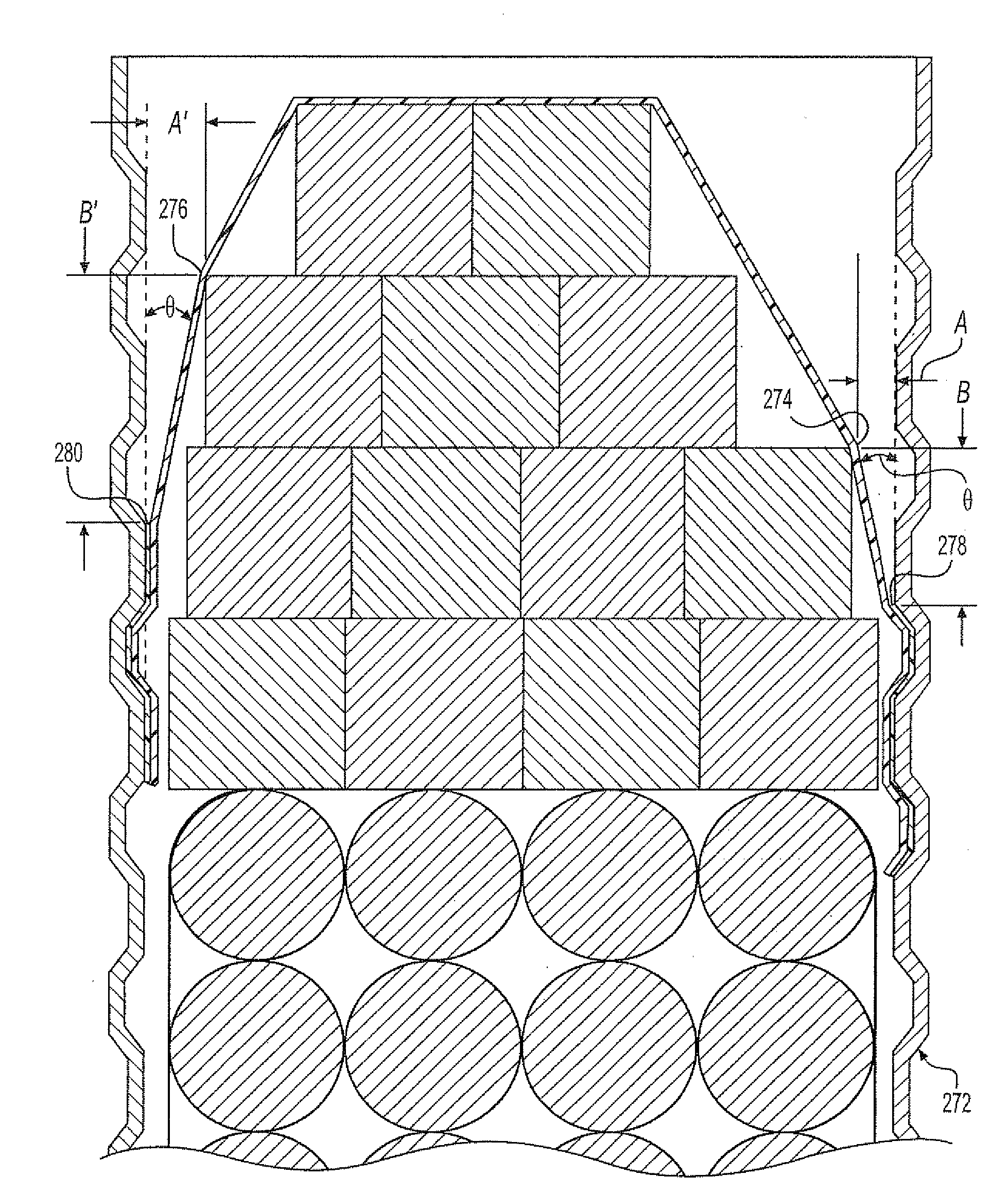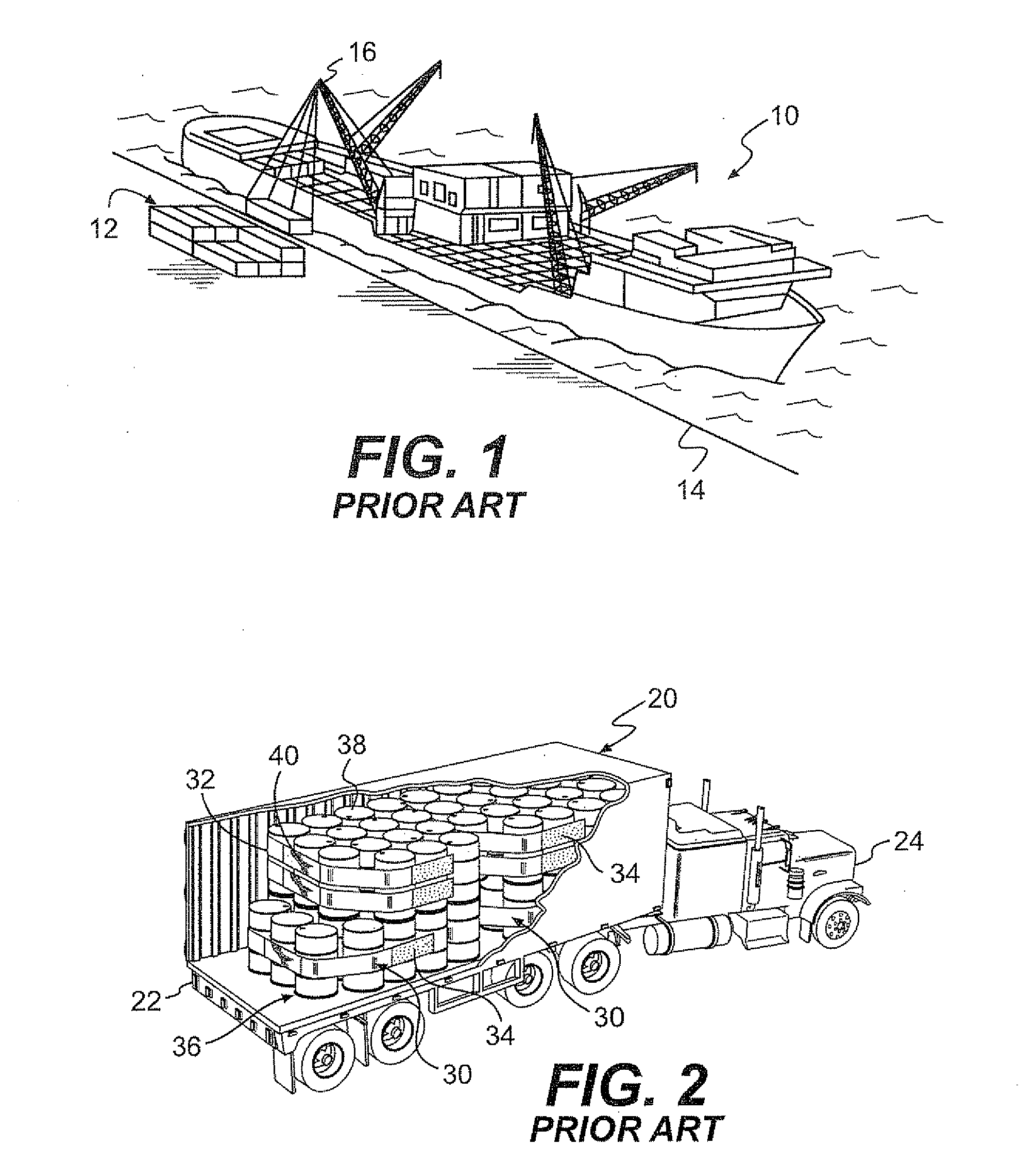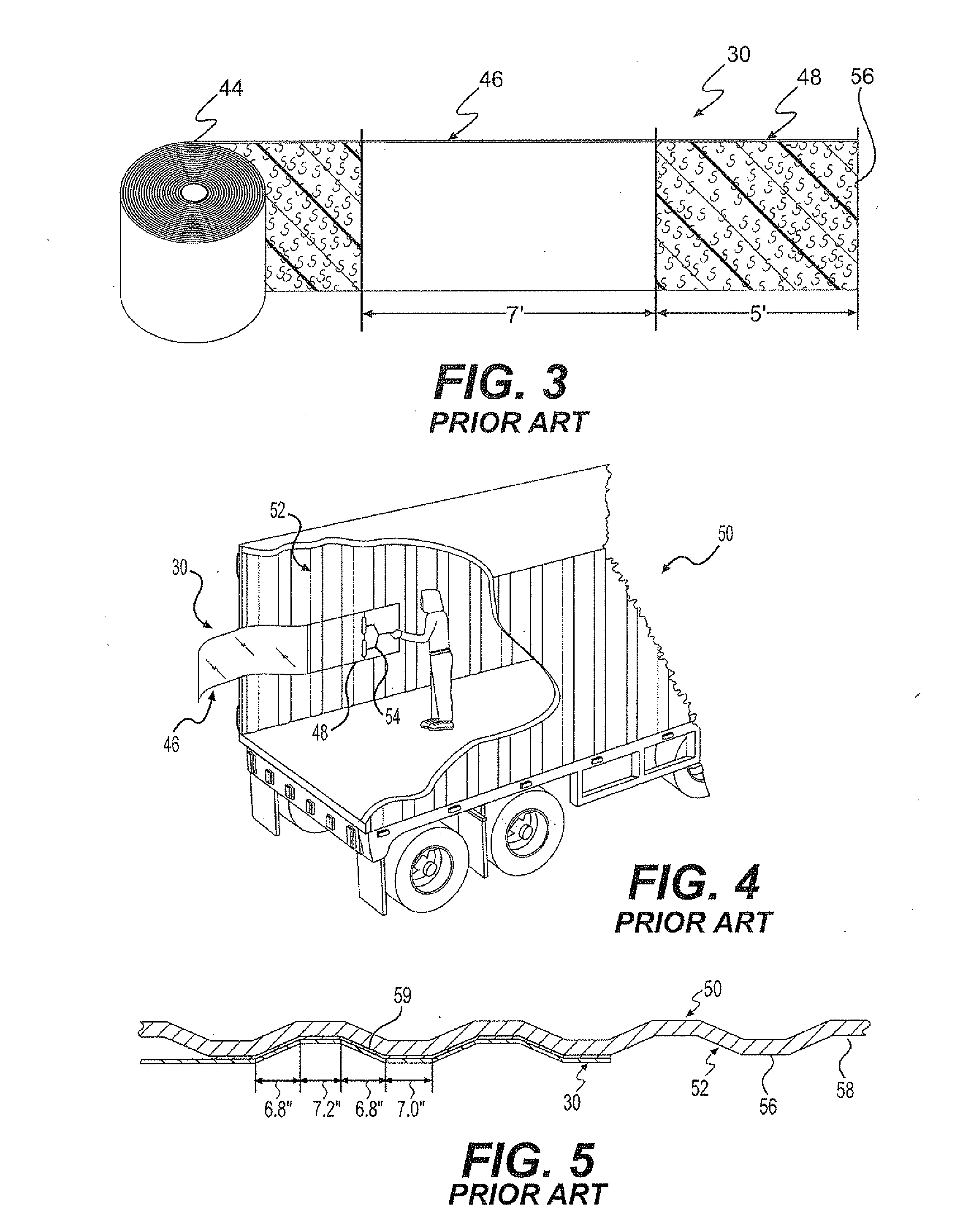Cargo restraint method and system with enhanced shear strength
a technology of shear strength and cargo, applied in the direction of transportation and packaging, transportation of items, synthetic resin layered products, etc., can solve the problems of small change in velocity or direction, the potential to apply substantial forces on the contents within the intermodal container, and the amount of load travel for a given level of impact can be minimized, and the effect of reducing material and labor costs
- Summary
- Abstract
- Description
- Claims
- Application Information
AI Technical Summary
Benefits of technology
Problems solved by technology
Method used
Image
Examples
Embodiment Construction
Context of the Invention
[0051]Referring now particularly to FIG. 1, there is shown one operative context of the subject invention. In this, a ship 10 is shown docked at a port and intermodal containers 12 are being loaded onto the ship. Specifically, FIG. 1 depicts the ship 10 at a dock 14 with cranes 16 lifting and loading the intermodal containers 12 to be stacked on the ocean going vessel 10. The subject invention may be advantageously used to secure cargo within intermodal containers, like the ones being loaded onto the ship 10, within rail cars, truck trailers and the like.
[0052]FIG. 2 is an axonometric view that discloses another operating environment of the invention. In this view an intermodal or cargo container 20 is shown mounted upon a trailer 22 which is operably towed by a tractor 24 for land transport. Containers such as these are also operable to be mounted on railway flat cars either directly or as attached to truck trailers 22.
[0053]A partially cut away portion of F...
PUM
| Property | Measurement | Unit |
|---|---|---|
| Length | aaaaa | aaaaa |
| Length | aaaaa | aaaaa |
| Length | aaaaa | aaaaa |
Abstract
Description
Claims
Application Information
 Login to View More
Login to View More - R&D
- Intellectual Property
- Life Sciences
- Materials
- Tech Scout
- Unparalleled Data Quality
- Higher Quality Content
- 60% Fewer Hallucinations
Browse by: Latest US Patents, China's latest patents, Technical Efficacy Thesaurus, Application Domain, Technology Topic, Popular Technical Reports.
© 2025 PatSnap. All rights reserved.Legal|Privacy policy|Modern Slavery Act Transparency Statement|Sitemap|About US| Contact US: help@patsnap.com



